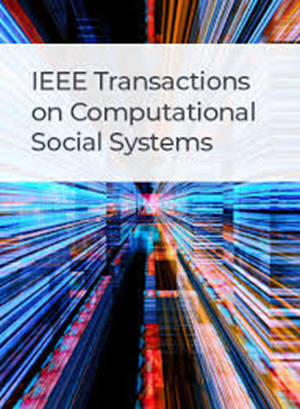Unraveling the Deception of Web3 Phishing Scams: Dynamic Multiperspective Cascade Graph Approach for Ethereum Phishing Detection
IF 4.5
2区 计算机科学
Q1 COMPUTER SCIENCE, CYBERNETICS
IEEE Transactions on Computational Social Systems
Pub Date : 2024-12-31
DOI:10.1109/TCSS.2024.3516144
引用次数: 0
Abstract
Ethereum, as one of the most active cryptocurrency trading platforms, has garnered significant academic interest due to its transparent and accessible transaction data. In recent years, phishing scams have emerged as a serious criminal activity on Ethereum. Although most studies model Ethereum account transactions as networks and analyze them using traditional machine learning or network representation learning techniques, these approaches often rely solely on the latest static transaction records or use manually designed features while neglecting transaction histories, thus failing to fully capture the dynamic interactions and potential trading patterns between accounts. This article introduces an innovative multiperspective cascaded dynamic graph neural network model named DMPCG, which extracts phishing transaction data from authoritative databases like blockchain explorers to construct transaction network graphs. The model elevates the analysis from the microscopic features of nodes to the macroscopic dynamics of the entire network, integrating the attributes of static snapshot graphs with the evolution of dynamic trading networks, significantly enhancing the accuracy of phishing detection. Experimental results demonstrate that the DMPCG method achieves an impressive precision of 92.6% and an F1-score of 90.9%, outperforming existing baseline models and traditional subgraph sampling techniques.揭露Web3网络钓鱼诈骗的欺骗:动态多角度级联图方法用于以太坊网络钓鱼检测
以太坊作为最活跃的加密货币交易平台之一,由于其透明和可访问的交易数据而引起了极大的学术兴趣。近年来,网络钓鱼诈骗已成为以太坊上的一种严重犯罪活动。尽管大多数研究将以太坊账户交易建模为网络,并使用传统的机器学习或网络表示学习技术对其进行分析,但这些方法通常仅依赖于最新的静态交易记录或使用手动设计的功能,而忽略了交易历史,因此无法完全捕获账户之间的动态交互和潜在交易模式。本文介绍了一种创新的多视角级联动态图神经网络模型DMPCG,该模型从区块链explorer等权威数据库中提取网络钓鱼交易数据,构建交易网络图。该模型将分析从节点的微观特征提升到整个网络的宏观动态,将静态快照图的属性与动态交易网络的演化相结合,显著提高了网络钓鱼检测的准确性。实验结果表明,DMPCG方法获得了92.6%的精度和90.9%的f1分数,优于现有的基线模型和传统的子图采样技术。
本文章由计算机程序翻译,如有差异,请以英文原文为准。
求助全文
约1分钟内获得全文
求助全文
来源期刊

IEEE Transactions on Computational Social Systems
Social Sciences-Social Sciences (miscellaneous)
CiteScore
10.00
自引率
20.00%
发文量
316
期刊介绍:
IEEE Transactions on Computational Social Systems focuses on such topics as modeling, simulation, analysis and understanding of social systems from the quantitative and/or computational perspective. "Systems" include man-man, man-machine and machine-machine organizations and adversarial situations as well as social media structures and their dynamics. More specifically, the proposed transactions publishes articles on modeling the dynamics of social systems, methodologies for incorporating and representing socio-cultural and behavioral aspects in computational modeling, analysis of social system behavior and structure, and paradigms for social systems modeling and simulation. The journal also features articles on social network dynamics, social intelligence and cognition, social systems design and architectures, socio-cultural modeling and representation, and computational behavior modeling, and their applications.
 求助内容:
求助内容: 应助结果提醒方式:
应助结果提醒方式:


